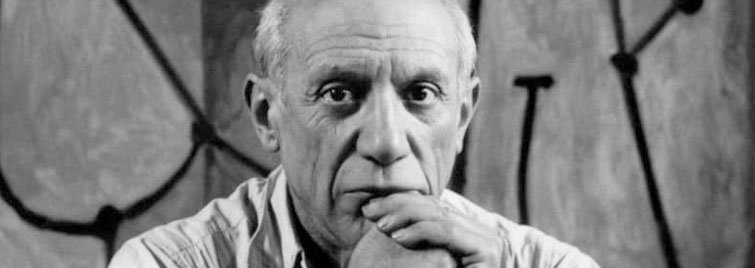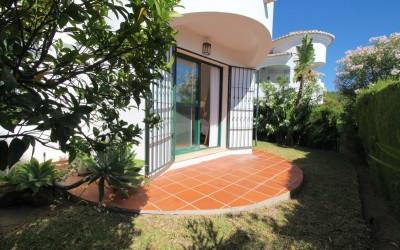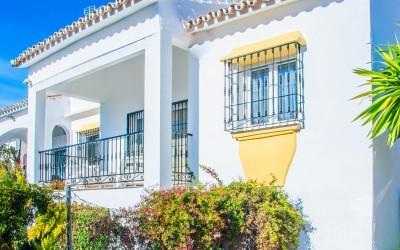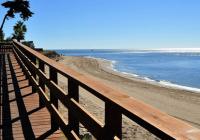
Pablo Picasso is often referred to as Malaga’s most famous son. Perhaps best well-known as a painter, Picasso was also a sculptor, print maker, theatre designer and ceramic maker. Picasso spent much of his adult life living and working in Paris, meaning that many people mistakenly presume that he is a French artist. But he was both born and baptised in Malaga, given the full name Pablo Diego José Francisco de Paula Juan Nepomuceno María de los Remedios Cipriano de la Santísima Trinidad Ruiz y Picasso.
His name honoured both his parents, other relatives, and various saints.
Picasso was trained by his father, a fine art professor, from a very early age, and fast became one of the most famous and revered Spanish artists, both in his lifetime and beyond. Here we explore both the life and works of Picasso, and the Picasso Museum that honours him in his birthplace of Malaga:
Understanding Picasso
Picasso was an incredibly prolific artist, and his work both dominated and defined several movements, notably both cubism and modernism. Because Picasso had such a long life, and a long career, he produced thousands of pieces of work throughout his lifetime. His professional training, under the tutorage of his father, began in 1890 when he was just nine years old. He was admitted to the School of Fine Arts in Barcelona when he was just 13 years old: completing the entrance exam that takes most pupils several months in just one week.
Like so many artists, he started his career creating works of art that focused on Realism, but by 1897 his work had begun to include symbolist elements, with the colours he chose to use teling a story rather than being true to the image or scene in front of him. In 1900 Picasso moved to Paris, and it was here that he entered his famous Blue period, which began in 1901.
During the early half of his career, the harlequin was a common motif throughout Picasso’s work. The harlequin was thought to represent Picasso’s alter ego: a mysterious character with the ability to become invisible and blend into the crowd. Picasso often inserted himself, or representatives of himself, into his work.
Picasso is thought to be one of the most prolific artists of his generation, contributing approximately 50,000 different pieces of work to the canon. These comprised of1,885 paintings; 1,228 sculptures; 2,880 ceramics, roughly 12,000 drawings, many thousands of prints, and numerous tapestries and rugs. But it was the world of painting that he was considered to have made his most significant contributions, and his use of texture and colour in particular has continued to influence artists and art-enthusiasts for generations.

Picasso’s Private Life
Picasso’s private life was almost as colourful as the works of art he created. He was married twice and had four children by three different women. Picasso maintained several mistresses alongside his marriages, and was well-known for his love of beautiful women. Picasso’ women are incredibly important, because they nourished his emotional and erotic desires, which in turn influenced his creative work. The female form is a recurring image in Picasso’s work, and presence of his romantic partners was considered toe a vital part of his artistic process. Many of the women that Picasso chose as his mistresses functioned as muses for him, and their inclusion in his extensive oeuvre granted them a place in art history.
Whilst it is clear to see what Picasso gained from having these women in his life, it is less clear that he brought to them: with hindsight Picasso was considered to be a misogynist and mistreater of women. Of the several important women in his life, two, Marie-Thèrése Walter, a mistress, and Jacqueline Roque, his second wife, committed suicide According to one of his mistresses, François Gilot, Picasso once said that “Women are machines for suffering.”
Picasso’s Legacy
Picasso is as popular now as he was when he was living. According to the Arts Market Trends report conducted in 2015, Picasso remained the top-ranked artist (based on sales of his works at auctions) . More of his paintings have been stolen than any other artist's and in 2012, there were 1,147 of his pieces listed on the Art Loss Register.
Perhaps the biggest and most important legacy that Picasso has is the sheer number of modern artists that aspire to emulate his work, challenge his techniques, and reinterpret his works with their own flair. Picasso never stopped reinventing his style and showcasing his commitment to improving his work and that is something for all artists to continue to aspire to.

Visiting the Picasso Museum in Malaga
The Building
The Picasso museum in Malaga opened in 2003, although the concept of opening a museum dedicated to Picasso in the city of his birth had been discussed by officials in Malaga since 1953. The museum is housed inside is a stunning structure, and one that is worth exploration even without its link to Picasso. The museum is situated in the Buenavista Palace, which was declared a national monument in 1939. This palace was converted into the building that it is today by the American architect Richard Gluckman: the building is an attraction in itself, even without the association with Picasso.
The location of the Picasso Museum is just 200 metres away from the Plaza de La Merced, which is where Picasso was born. Picasso moved away from Malaga when he was just ten years old, but the city was the place where he reached many of his early milestones. The Calle San Agustín, the street where the Picasso Museum is located, was also the street where the young Picasso went to nursery school. The city museum in the old town hall that his father curated was also on the same street. What’s more, if you climb the staircase to the very top of the museum, you can see the tower of the church of Santiago, where Picasso was baptized.

The Artwork
Of course, most people visit Malaga’s Picasso Museum to see examples of the artists work, and if that’s what you’re looking for then you really will be spoilt for choice. Many of the works in the museum have either been gifted or loaned to it by members of the Picasso family, meaning that the museum contains pieces you are unlikely to see or be able to see anywhere else. Christine Ruiz-Picasso, widow of the artist's eldest son Paulo Ruiz-Picasso, worked with Málaga to establish the permanent collections before the museum was opened. She has donated a total of 133 Picasso works to the museum in total, including 14 paintings, 9 sculptures, 44 individual drawings, a sketchbook with a further 36 drawings, 58 engravings, and 7 ceramic pieces. Picasso's grandson, Bernard Ruiz-Picasso is another key contributor to the collection, donating 5 paintings, 2 drawings, 10 engravings, and 5 ceramic pieces. In total, you will find 233 works of art by Pablo Picasso as part of the permanent collection.
The work is organised both chronologically and thematically, and the permanent collection has recently been refreshed. This is currently titled Dialogues with Picasso, and will be on display until 2023. The curators of the museum believe that “By periodically refreshing, and thus revising, its permanent collection, Museo Picasso Málaga is in a way following in the footsteps of Picasso himself, who innovated constantly with his art throughout his life.”

Visiting the Picasso Museum
If you are spending time in Malaga then a visit to the Picasso Museum is considered essential! It is the cultural hub of the city, and a wonderful tribute to its most famous son. The museum opens every day of the week from 10am to 7pm, and is only closed on 25th December, 1st and 6th January. The ticket office is open until half an hour before closing time, but we suggest you allow much longer than that to fully explore everything that the museum has to offer.
You can find the Picasso Museum Malaga at Palacio de Buenavista, Calle San Agustín, 8, 29015 Málaga. The museum is located in the city’s historic centre, close to the cathedral, which makes it very easy to find. We recommend booking your tickets online in advance, to make the process of entering the museum once you arrive as smooth and easy as possible. After all, why waste your time queuing for tickets when instead you could be enjoying the incredible works inside?
Are you thinking of taking the plunge and moving to Spain? If you’ve always dreamt of relocating but don’t know where to start then our local property experts are perfectly placed to help you find the Spanish property of your dreams. Why not get in touch today?

 English
English Español
Español Deutsch
Deutsch Français
Français Svenska
Svenska Nederlands
Nederlands Italiano
Italiano Norsk
Norsk Русский
Русский

































